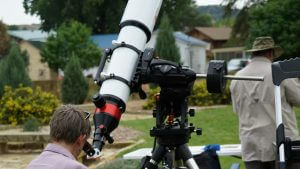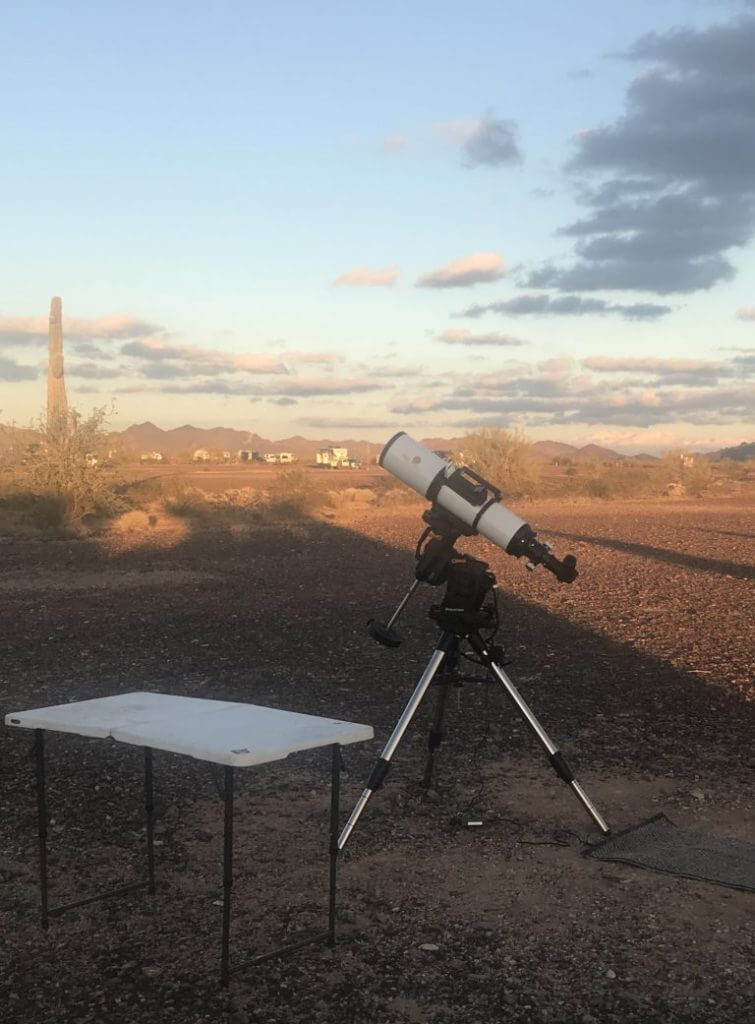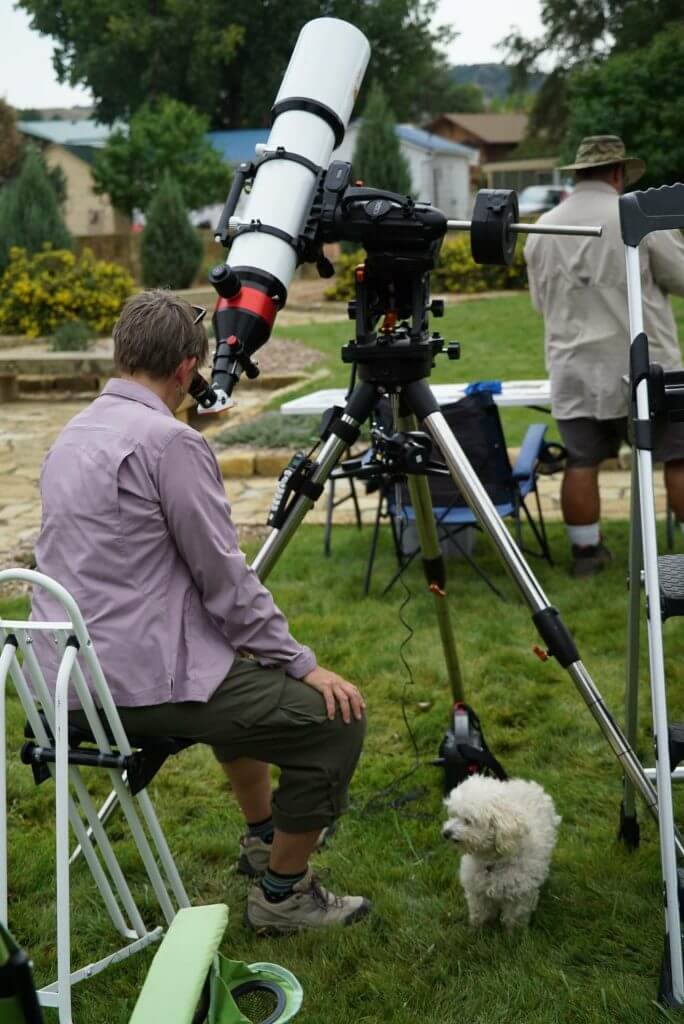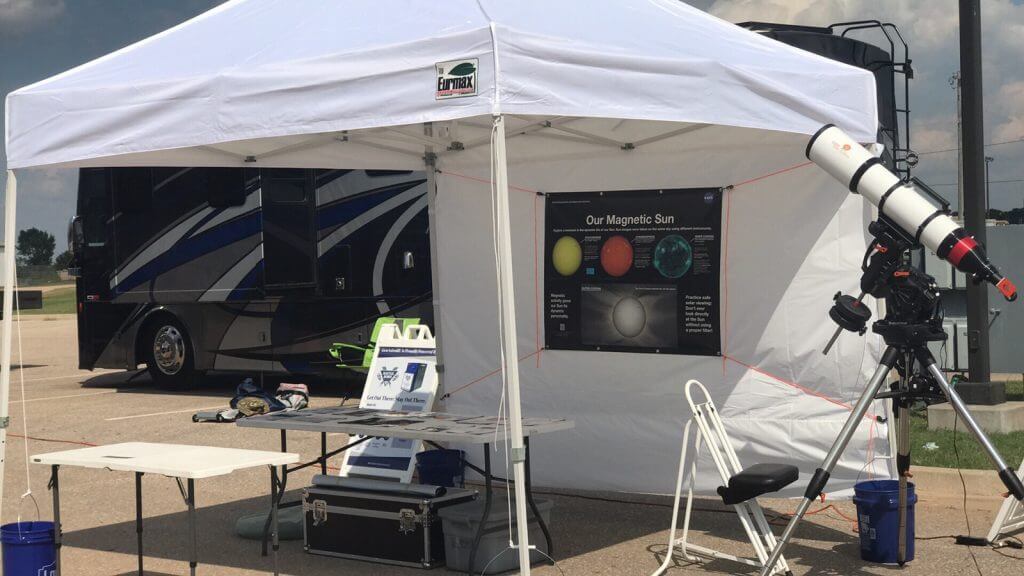
We were super excited to host our visitors from GEOASTRORV. Check out this portion of their article about their visit, and be sure to visit the rest of their blog at geoastrorv.com.
GEOASTRORV — Our Geology and Astronomy RV Journey
Last fall, we purchased a Lunt 152THa solar telescope. This 152 mm (6″) f/6 hydrogen-alpha (h-alpha) telescope has supplied us with fabulous views of our nearest star, the Sun. It’s an impressive scope, and by removing the h-alpha pressure tuners, it is one that we can use for both day and night viewing.


We noticed that one of the small screws near the front of the scope had come loose and was trapped between the retractable dew shield and body of the scope, so while we were in Tucson we made an appointment at Lunt to see if they could rescue the screw and put it back into place. Little did we know that in addition to fixing the scope, we would get a tour of their fabulous facility and see first-hand how the telescopes are created.
Our contact, Faye Roman, Head of Customer Support, has worked with us from the very beginning. She has answered countless questions from John, and it was a pleasure to finally meet her.

We were introduced to Brian Stephens, Lunt’s Lead Design Engineer, who quickly and easily rescued the screw and put it back where it belonged. Brian spent most of the afternoon talking with us and giving us a tour of the business.

I was struck by the fact that this is not a huge building where the award-winning telescopes are made. They have approximately eight dedicated employees, all working together to design, fabricate, assemble, and test solar telescopes and solar filters for amateur and professional astronomers.
Brandon Keith, Senior Optician, showed us how the raw blank glass lenses are ground, edged, beveled, polished and prepared for final installation into the etalon and filter systems within a scope. Brian let us view finished lenses and showed us how to properly tune our telescope for maximum viewing.
We use a NASA approved talk on “Our Magnetic Sun” which walks people through various aspects and features of the Sun. When done, people can look through our scopes to see these features at the eyepiece.
